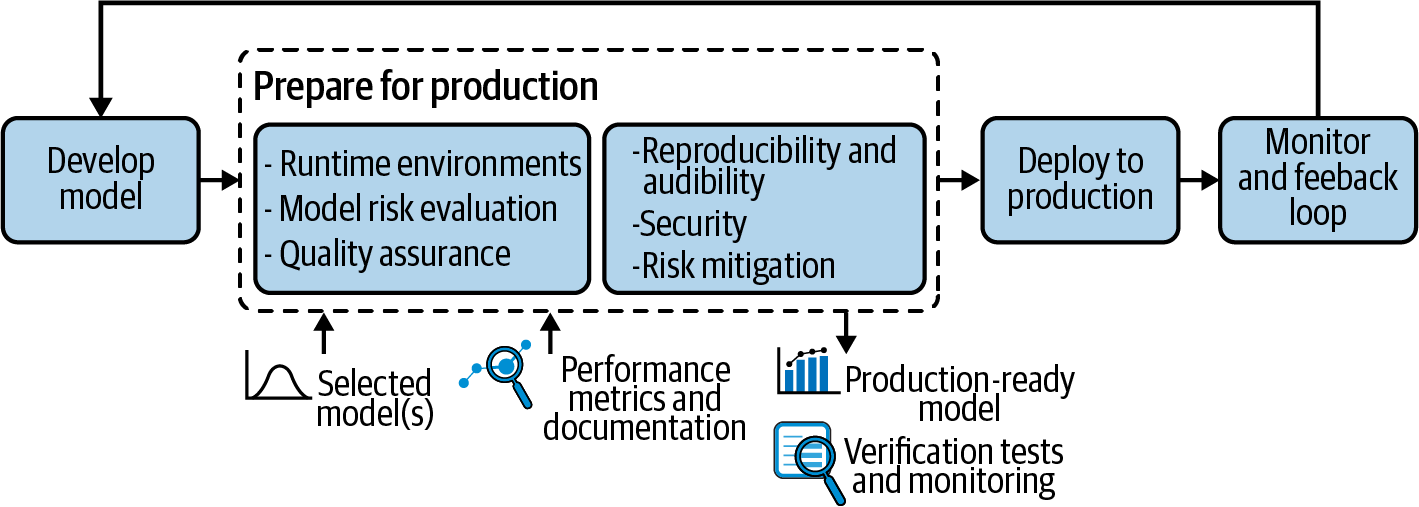Chapter 5. Preparing for Production
Confirming that something works in the laboratory has never been a sure sign it will work well in the real world, and machine learning models are no different. Not only is the production environment typically very different from the development environment, but the commercial risks associated with models in production are much greater. It is important that the complexities of the transition to production are understood and tested and that the potential risks have been adequately mitigated.
This chapter explores the steps required to prepare for production (highlighted in the context of the entire life cycle in Figure 5-1). The goal is to illustrate, by extension, the elements that must be considered for robust MLOps systems.

Figure 5-1. Preparing for production highlighted in the larger context of the ML project life cycle
Runtime Environments
The first step in sending a model to production is making sure it’s technically possible. As discussed in Chapter 3, ideal MLOps systems favor rapid, automated deployment over labor-intensive processes, and runtime environments can have a big effect on which approach prevails.
Production environments take a wide variety of forms: custom-built services, data science platforms, dedicated services like TensorFlow Serving, low-level infrastructure like Kubernetes clusters, JVMs on embedded ...
Get Introducing MLOps now with the O’Reilly learning platform.
O’Reilly members experience books, live events, courses curated by job role, and more from O’Reilly and nearly 200 top publishers.

